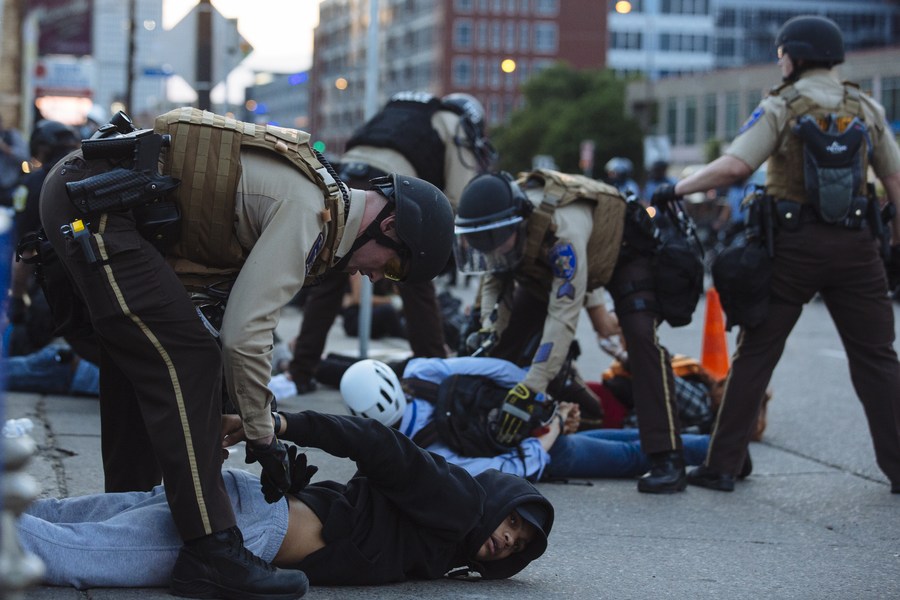Lid kept on fatalities in US police dealings
By BELINDA ROBINSON in New York | China Daily Global | Updated: 2021-10-11 11:43

Reports fail to disclose involvement of officers in deaths, study finds
Federal databases in the United States underreported the true extent of how many civilians were killed by police over the past 40 years, as many deaths were labeled incorrectly and did not disclose whether officers were involved, a study has found.
The study, "Fatal police violence by race and state in the USA, 1980-2019", was conducted by researchers at the University of Washington and published in the British medical journal The Lancet on Sept 28.
Researchers mined information from a federal database called the National Vital Statistics System that collects death certificates and compared the information with that of three organizations that keep track of police homicides from news reports and other sources.
They found that 55 percent of all police interactions that ended with a civilian death between 1980 and 2018 were labeled as something other than a death resulting from an encounter with police.
Over the 38 years police killed at least 31,000 people, the study found, but about 17,000 of these were not listed as a death due to an encounter with police.
The states and jurisdiction where police killed the most civilians were Oklahoma, Arizona, Alaska and the District of Columbia. The states with the lowest rates of deaths involving police were Minnesota, Massachusetts and Connecticut.
The study also revealed that men are killed by police at 20 times the rate of women.
There were also stark disparities by race. African Americans were killed at 3.5 times the rate of their white counterparts by police. Latinos and Native Americans were also killed at high rates by law enforcement.
There were no figures on how many Asian Americans were killed by police.
"Many countries … rely on government-run vital registration systems to collect cause of death data," the researchers said. "Although vital registration systems in many countries are considered to be reliable sources on causes of death, they present a potential conflict of interest for deaths from police violence, since the same state responsible for violence is also responsible for reporting it."
Conflict of interest
In most cases where there is doubt about the cause of death in the US, a medical examiner determines what occurred. However, some coroners and medical examiners are employed directly by police departments, creating a situation that could be ripe for a conflict of interest in favoring police, The New York Times said.
The findings of a medical examiner are crucial in classifying a death involving police, because they can determine whether criminal charges can be filed against a police officer involved and whether a family can obtain a settlement in the event of a wrongful death.
Additionally, at present death certificates do not have to list whether the cause of death was due to police interaction. This could be one reason for discrepancies in how deaths are officially recorded.
The National Association of Medical Examiners says deaths involving police officers should be classified as homicides on death certificates, but there are no national guidelines that make this mandatory.
Figures on deaths in police custody are also murky. In 2014 a federal law instructed law enforcement agencies to collect figures on how many deaths in custody there had been, but information on this has yet to be made public.
In the brutal murder in May last year of George Floyd by Minneapolis police officer Derek Chauvin, who kept a knee on his neck for nine minutes and 29 seconds until he died, the county medical examiner first blamed Floyd's drug use and other health conditions.
Ultimately the death certificate did classify the death as a homicide, but at Chauvin's murder trial a former chief medical examiner, David Fowler, testified for the defense that the killing, caught on camera, was not a homicide.
After his testimony, a complaint of obvious bias was issued against him, and now all other police-involved murder cases that he presided over are being investigated.
























